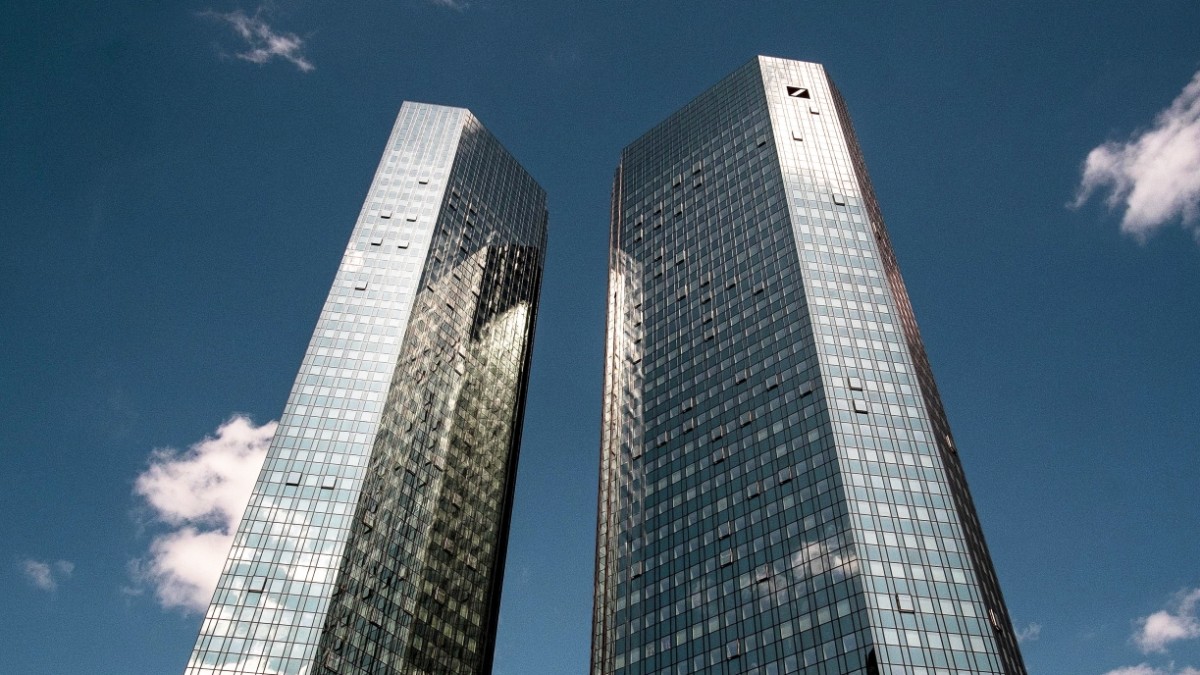 —
—In the television series “Bad Banks” two bankers fight against each other (picture). At Deutsche Bank, the bad bank blocks the view of the state of the money house.
(Photo: ZDF and Letterbox Filmproduktion)
—
There will be hope when Deutsche Bank reports on the third quarter of business this Wednesday – that the 150-year-old bank will recover, that the renewed renovation that was initiated in summer 2019 will lead to success and that the corona crisis will spare the institute halfway.
Investment banking? Apparently hums. The shareholders? Halfway satisfied. Corona loan defaults? Keep within limits. In addition, the market leader is secretly pleased that the rival Commerzbank suffered a management crisis – after disgraceful years, the “yellow” ones are Frankfurt’s number one crisis bank.
The idyll is of course disturbed by a strange balance trash can called “Bad Bank”. Erected in the summer of 2019, the bank sank securities there that were originally traded by the investment bankers. The stock business also slumbered there. The papers are now in this trash can and should relieve the core business. It’s not about peanuts: Securities worth 250 billion euros went into the bad bank, which corresponds to the balance sheet total of a Landesbank.
Specialists take care of bad loans. You bundle them up and sell the package to investors
The term Bad Banks is known from the television series of the same name, where it stands for the bad in the financial business. In the technical jargon, bad banks stand for the outsourcing of bad loans: As soon as banks are overwhelmed by the burden of bad loans, specialists take care of the balance sheet junk. You bundle it, sell it to investors, free banks of risks and ideally relieve their equity. For bad loans, they have to save a lot of equity. A bad bank makes sense if the losses from it do not get out of hand, i.e. if the bottom line is that equity is still released on the balance sheet.
All of this is not easy to understand, but it is important to be able to assess where Deutsche Bank really stands. After all, they know their way around Frankfurt with Bad Banks. There was such a balance trash can before, and it was abolished in 2017. Now he’s back – and probably blocking the view of the state of the bank. Because at the same time, the exercise also makes investment banking shine brighter, where most of the lossy papers come from – after all, every room looks tidier when the garbage is in the bin. And the better the investment banking, the more bonuses the investment bankers can claim.
On the other hand, the way things have been going so far, the bad bank apparently missed its official mandate. Because that was of course not to enable bonuses for investment bankers, but to release equity – which is why the bank calls the trash can “Capital Release Unit”, “Capital Release Unit”. They don’t like hearing the word “bad bank”. It go that’s what CEO Christian Sewing said in 2019, not about scrap, but about “quality” papers with sometimes short maturities as well as business that the bank is giving up, such as the stock business. The sale should generate five billion euros in excess capital by 2022, which will be distributed to shareholders.
Actually, the shareholders should go to the barricades
Only: The alleged quality papers cause gigantic losses – from 2019 to 2022, when the bad bank is to be closed again, an enormous nine billion euros, as analysts estimate and can be read from the bank’s numbers. From a presentation in December 2019 also shows that the “capital-release unit” does not devour additional capital, but also does not “release” any because its losses are simply so great. Is the bank sticking to the goal that winding up alone will free up five billion in capital? A spokesman only said that one would be willing to give back five billion euros to shareholders from 2022. The bank then has a lower-risk business model and requires less capital.
Actually, the shareholders should go to the barricades. In fact, it is difficult to get an opinion on them – perhaps because they have been disappointed too often. Analysts from other banks often shy away from expressing themselves critically. An Anglo-Saxon analyst, who wants to remain anonymous, admits that the “market” did not believe the promise from the start; Corona and loan defaults are also currently more important.
Dieter Hein, a freelance analyst and longstanding expert on the bank, is more willing to provide information. “It’s always the same game,” says Hein. “You’re shoving the bad deals into a bad bank. This makes investment banking look good, the bonuses are secured.” The bank says that it is customary to bundle transactions to be processed. They are very satisfied, the process is progressing.
Is the bank shifting losses and costs? The institute does not want to comment on this
From the outside, however, it is difficult to judge exactly where the losses in the bad bank come from. In presentations by the bank However, there are indications: Instead of becoming more valuable, the securities cause annual “negative income” of 200 to 400 million euros due to market fluctuations, when they are sold or due to hedging costs. In addition, there are two to three billion euros in costs. What exactly is unclear for, but they correspond to around ten percent of corporate costs, although the Bad Bank employs just 1.4 percent of all employees. Is the bank shifting losses and costs? The institute does not want to comment on this. A spokesman said: The losses were not primarily due to the sale of the assets, but mainly due to the costs of platforms that would have to continue to operate.
Around a third of the bad bank balance sheet also comes from bond trading, which is still the most important part of the bank’s investment banking today. In addition, it is not about legacy, but business from the years when Sewing’s predecessor John Cryan took over the management and also promised a “lower risk” business model. After all, there had been a bad bank before. A spokesman does not want to comment on the origin of the business. A company insider says: “These transactions have no place in a bad bank, because they are securities, not complicated real estate loans or the like. They should be handled by the responsible dealer.”
Of course, that wouldn’t be attractive. After all, traders only receive part of their bonuses later and only then if a business does not turn out to be lossy in retrospect. Is it like this? The bank did not want to comment on the question of whether bonuses were withheld or repaid because of the bad bank losses.
It’s not about peanuts either. In 2019 alone, 583 employees still earned the bank more than one million euros a year. And it is also clear: If investment banking continues to hum in 2020 as it has been up to now, the employees there will again demand a fat bonus. Others are allowed to take care of the balance sheet scrap that they have produced in the past.
– .


